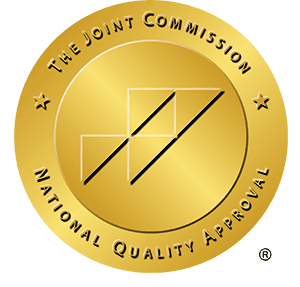
The Importance of Mindfulness in Recovery
Psychologists in addiction treatment centers often present mindfulness to you as a tool. It will help guide you through the ups and downs of recovery. What is mindfulness though? Why is it necessary? How does it help substance use disorder (SUD)? It is important to address the importance of mindfulness in recovery.
Understanding Mindfulness and Dissociation
Mindfulness is the ability to be fully present in your body and surroundings. When you practice mindfulness, you can regulate your emotional reactivity to a reasonable degree. While mindfulness does not fix everything, it allows for clarity and mental homeostasis.
Though some people discuss mindfulness as a natural ability, you may find that your brain does not default to this skill. Trauma, especially complex trauma, creates a proclivity towards dissociation. Dissociation cognitively distances you from your mental state, body, and/or environment. This response is a biological protection against high-stress levels. It falls into the “freeze” category of the fight, flight, freeze, or fawn response.
Like any other ability, continually engaging in mindfulness trains the brain. The neurons communicate better and faster with repetition. Mindfulness will usually feel easier with continual practice. Dissociation can happen less frequently as mindfulness improves. Mindfulness can become a healthy coping mechanism for stress. Given the high co-occurrence between trauma and SUD, substance treatment programs should include mindfulness exercises.
Mindfulness Exercises
You can implement mindfulness in big or small ways. To give you an idea of how it works, consider the following four common forms of mindfulness. These exercises keep you mentally present and they do not require a large amount of physical space.
Yoga
Yoga is a holistic activity involving body movement, breath control, positive thoughts, relaxation, and balance. There are many types of yoga; however, Hatha yoga is the most commonly practiced in the West. It promotes connection with your environment. It offers these health benefits:
- Stress relief
- Better heart help
- Improved flexibility
- Lower anxiety and depression
- Mental clarity
- Stronger muscles
- Better bone health
It is important to remember that yoga is more about intention and mentality than physicality. At its core, it is a mindfulness activity. You can modify asanas or physical poses to accommodate different disabilities and exercise levels. Due to its adaptability, almost anyone can participate in yoga. Initially, you may need instruction on how to do the different asanas. Eventually, you can practice yoga in solitude.
Grounding Exercises
Your senses can prove the most effective tool for mindfulness. In one grounding exercise, you list the following: five things you can see, four things you can feel, three things you can hear, two things you can smell, and one thing you can taste.
Another grounding exercise involves listing off items in your surroundings. For example, you could go through each color of the rainbow.
A third grounding activity involves holding warm or cold objects. This can come in the form of ice cubes or heating packs. You focus your attention on the temperature and how it makes your body feel.
All of these grounding exercises provide a strong connection to your body and surroundings. It can make you feel fully present. You are tuning into your senses, becoming more aware of bodily sensations.
Box Breathing
Box breathing, also called square breathing, offers rapid stress relief. The breathing exercise uses mental imagery to guide you. Breathe in through the nose for four seconds. Hold for four seconds. Breathe out through the mouth for four seconds. Hold for four seconds. These actions create the sides of a square. You can even imagine a dot moving around the outline of the box. Alternatively, you can imagine a pencil drawing over the same lines.
To receive the full benefits, you should continue box breathing for two to five minutes. Box breathing drops cortisol and adrenaline hormones and can lower heart rate. Focus typically improves after a few minutes. It can even stop panic attacks.
Massage
Before and during a massage, practitioners set up a relaxing environment. They may put on soothing music. Many offer beverages like chamomile or peppermint tea. Depending on whether you are sensitive to aromas, some may burn incense. The rooms may include cool-toned colors, encouraging calmness. They might dim the lights because harsh lighting can increase alertness. All of these elements of a massage environment encourage mindfulness and attend to the main senses.
Good practitioners know how to match their strokes to your breathing. Starting with this, they can subtly slow their strokes, encouraging deeper breathing. They may use a lotion with diluted essential oils. Massage therapists often use docile tones when asking you questions about pressure and how it feels.
SUD and Mindfulness
When you enter treatment for SUD, you may experience heightened emotions or dissociation. There could be unaddressed mental health problems and trauma. Rehab programs can effectively treat these issues with mindfulness-based interventions (MBIs). As previously mentioned, mindfulness exercises can calm anxiety and depression. It can decrease stress, one of the leading causes of relapse.
Additionally, MBIs have a direct impact on substance use. In 2020, the scientific journal Substance Abuse Treatment, Prevention, and Policy published a systematic review of 30 different studies about implementing mindfulness for SUD. The results affirmed that MBIs can assist in decreasing the rates of relapse among patients. Multiple studies reviewed showed that cravings were less emotionally distressing when addressed in a pragmatic, mindful way. Individuals became aware of their desires and thoughts before acting on them; so, they could stop themselves from engaging in substances. Additionally, MBIs resulted in higher positive thinking and affect.
Based on all these factors, if you are seeking treatment, you should look for residential programs that regularly use mindfulness practices. Even if they are not the primary focus, mindfulness exercises can help center you.
Mindfulness exercises offer many physical and mental health benefits. People who regularly engage in mindfulness work towards a balanced, judgment-free mental state. They interact with their environment, fully present in the moment. This is especially effective in treating addiction.
If you or your loved one are looking to enter detox and rehabilitation for SUD, you should ensure the facility includes mindfulness-based interventions. Here at Healing Pines Recovery, we offer a men’s-only treatment program that balances holistic and clinical therapies. We’re settled on a beautiful 40-acre ranch in Elizabeth, Colorado. We provide many MBIs, including massages, essential oil grounding, yoga, meditation, and walk therapy.
By limiting our residency to eight men, we allow ourselves to focus on the needs of each person. Our program will lead you or your loved one toward a substance-free life. The future is waiting. Please contact us at 720-575-2621.
Paul Leafstedt
Paul was born and raised in the beautiful state of Colorado. He went to college in California at CAL Poly Pomona, majoring in Mechanical Engineering. Being a person in recovery and always finding fulfillment in helping others succeed, Paul co-founded a treatment center in California with 4 other partners. Paul came back to Colorado to continue his journey in the field of addiction, and to share his vision for Healing Pines Recovery. “Colorado is such a magical place for me, its natural beauty and peace lend itself for the perfect environment to connect with yourself and others. Healing Pines is different, it’s real, you can feel it. What you see is what you get here. This is a safe place to dig deep and be vulnerable, to re-discover yourself, what the world has to offer and what you have to offer the world.”Begin Your Journey & Escape Addiction
The first step can be the hardest. Fill out the form or call us at (720) 575-2621. You will be connected with a Healing Pines Recovery specialist who can answer your questions and help you get started.
Let Us Help You
Speak to Someone Right Now







